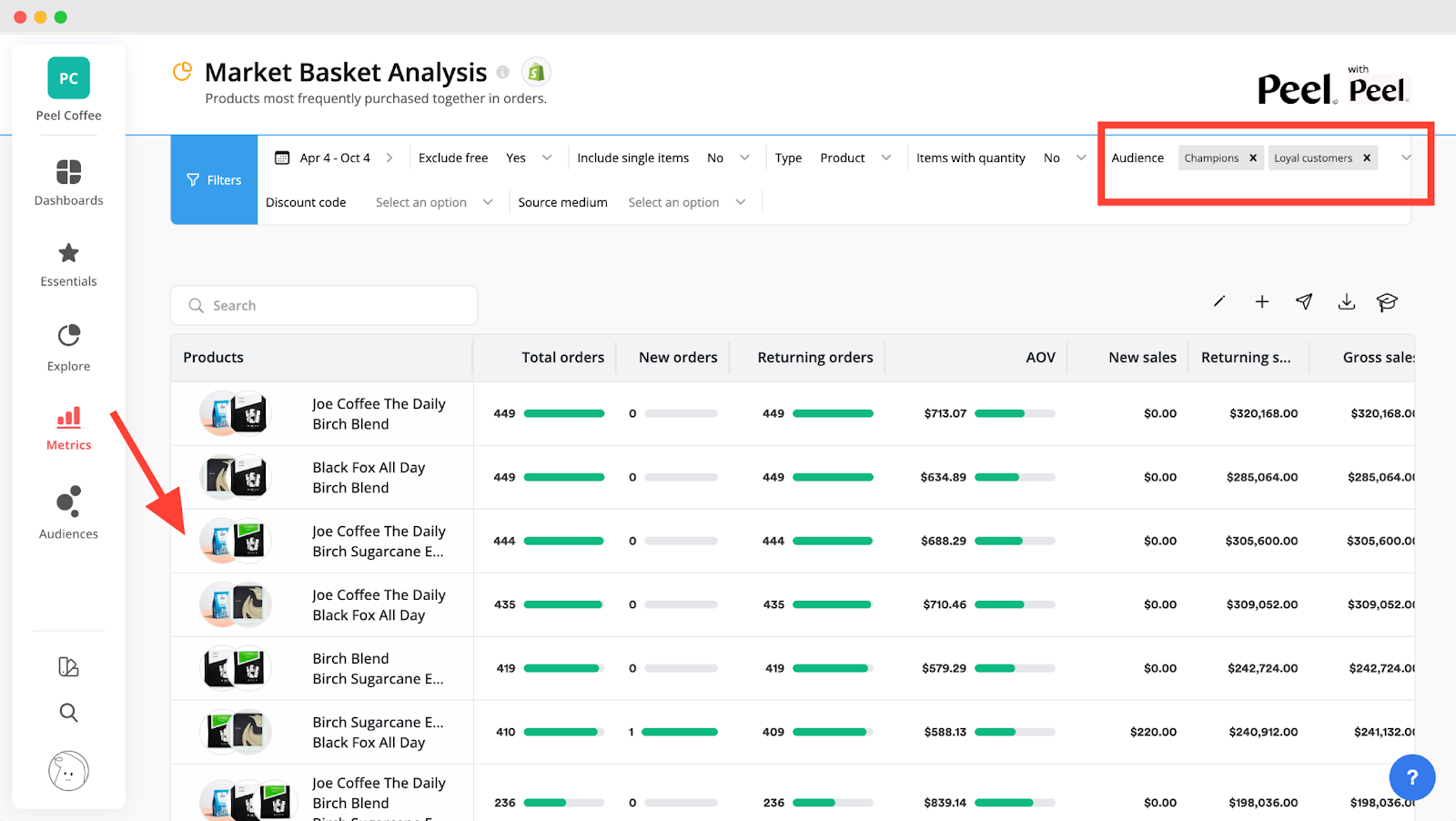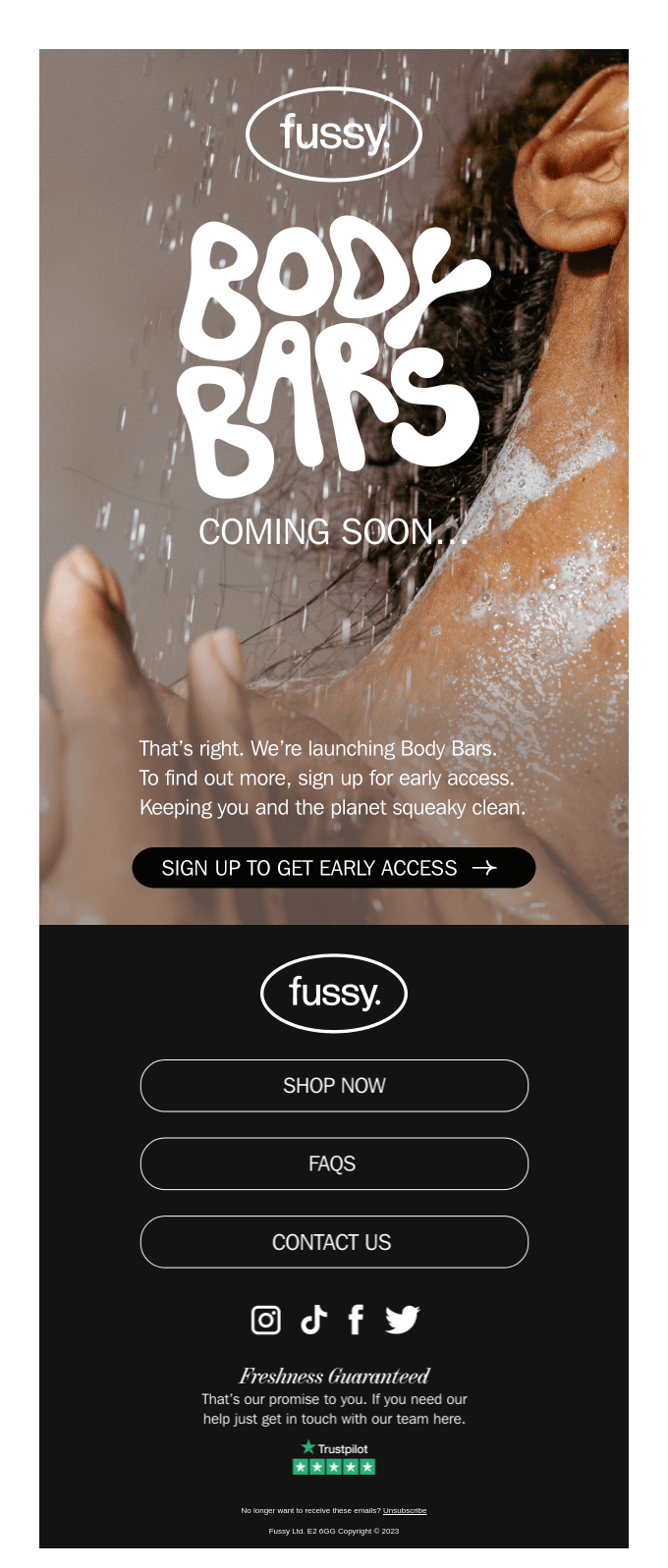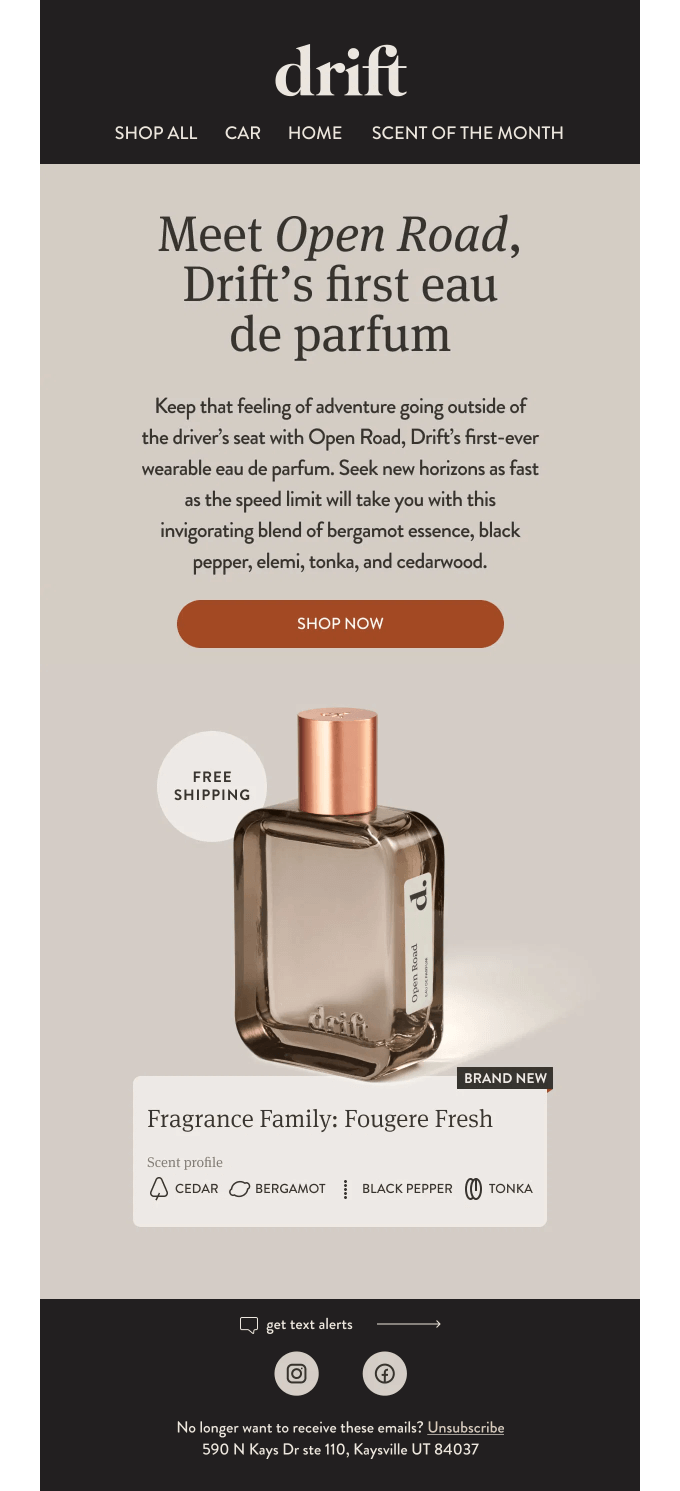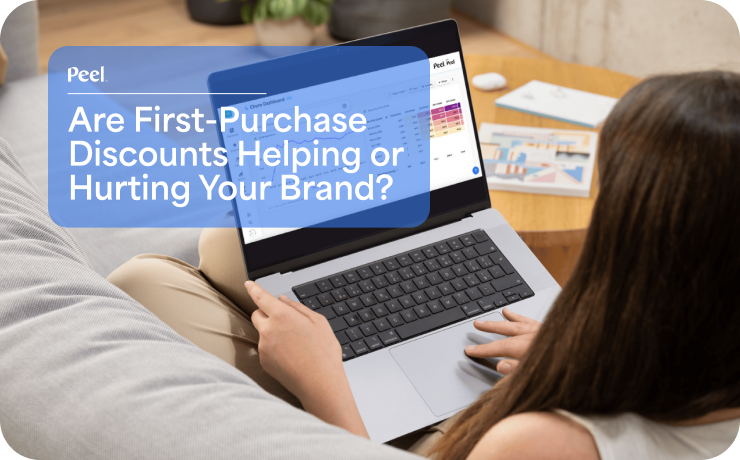So, you're about to launch a new product. Exciting times!
You've got your marketing plan ready, your inventory stocked, and enough coffee to fuel a small army. But hold up a second–here's the thing: launching a product without knowing your customers is like navigating a maze while blindfolded. Sure, you might get lucky, but wouldn't you rather have a clear vision?
Before you hit that proverbial red button, let's talk about how to make sure your product doesn't just take off, but actually sticks the landing.
The advantages of being data-driven
Every launch is an opportunity to make a lasting impression, generate revenue, and create buzz around your brand. But what separates the runaway successes from the forgotten failures? Often, it's the strategic use of data.
Here are some of the reasons why you should use data to inform your product launch strategy:
- Create products your customers actually want to buy
- Avoid overstocking and understocking while meeting customer demand
- Set prices that maximize profits and resonate with customers
- Reach the right customers with personalized, high-converting launch campaigns
So, where do you find the data that will help you with all these?
RFM - your secret weapon for product launches
That's where RFM analysis comes in. It's your secret weapon for successful product launches and not a lot of people use this data in their launch strategy.
RFM stands for Recency, Frequency, and Monetary value – three key pieces of customer data that can turn your launch strategy for the better. If you’re not familiar with RFM yet, read this first. Here’s a quick refresher:

Generally, we use RFM analysis to segment customers for targeted marketing. You can use it for improving ad performance, email marketing, and more. But, it can also arm you valuable insights that will greatly improve your odds of launching a successful product. It gives you a multi-dimensional view of your audience, helping you with:
- Identifying your most valuable customers
- Understanding purchasing patterns
- Creating targeted marketing campaigns and tailored product offerings
- Making educated guesses about how different segments might respond to your new product by analyzing past behavior
Pro Tip: When applying RFM to product launches, consider creating a "pre-launch" RFM score. This could factor in engagement metrics like email open rates, social media interactions, or website visits in addition to actual purchase data.
How to use RFM in your product launches
Your customers’ buying patterns and behaviors can shape your product launch from day 0 because RFM data isn’t just for marketing. These insights become valuable even in the product/market research phase. As you continue through the launch cycle, RFM continues to be valuable in setting prices, managing inventory, and getting early feedback.
You can use this guide as a blueprint for your product launches. We'll explore how to use this customer behavior data at each stage, from initial research to post-launch analysis and everything in between.
Data-Driven Product Development
RFM insights can drive more targeted, customer-centric product development strategies that resonate with your most valuable customer segments. Understanding what your best customers buy frequently can guide feature prioritization and product improvements.
Surveys
You’d have already found your high-value customers–the champions, loyalists, and promising loyalists. They’re the ones who buy often, spend big, and keep coming back for more. They should basically be your product development dream team, so get them involved!
(Note: Here’s a handy guide to finding your top 20% customers)
Here's a cool idea: create separate surveys for these VIP segments. Ask them questions like:
- "What's the one thing you wish our products could do?"
- "If you could wave a magic wand and create any product from us, what would it be?"
- "What's your biggest struggle that our products don't solve yet?"
For example, let's say you're a skincare brand. Your Champions might reveal they're dying for a travel-sized kit of their favorites. Boom! There's your next product idea.

Now, don't ignore your one-time buyers or those hibernating customers. They've got valuable info too! Create a different survey for these folks. Ask them:
- "What stopped you from buying again?"
- "What would make you consider giving us another shot?"
- "What products do you wish we offered?"
Maybe your one-time customers will tell you they loved your face cream but wished it had SPF.
If you’re using Peel Insights, you can directly send these customer segments to your Klaviyo and Attentive accounts to send these surveys through email or SMS.
Market Basket Analysis
Here's where things get really interesting (and a bit nerdy, but in a cool way). Dive into the basket analysis of your best customers. What are they buying together? What's missing from their typical haul?

Now, let's put this into action with our skincare brand example.
Say, you spot that your Loyal customers always grab your anti-aging serum and night cream, but never add an eye cream to their cart. Could be time to develop a killer eye cream that complements your existing products. You've just identified a gap in your product line you can fill!
This is particularly useful when you’re building new bundles. The beauty of this approach is that you're not just throwing darts in the dark. You're using real, data-driven insights from your best customers to guide your product development.
Tailored products
Combining the above two techniques, you can also arrive at who your audience should be for a particular new product.
Say you've crunched the numbers and found that about half of your customers are Champions, Loyals, or high spenders with a hefty average order value (AOV). For our skincare brand, this might mean it's time to roll out that ultra premium line of products. Your high-value customers are likely craving something extra special, and they're willing to pay for it. You could even create exclusive, expensive bundles that combine your top-tier products for a complete luxury skincare experience.
But what if your customer base looks different?
Let's say the majority of your customers are one-time buyers or have a lower AOV. In this case, you might want to focus on more accessible, entry-level products. Think travel-sized versions of your best-sellers, starter kits for skincare newbies, or more affordable package sizes that let customers dip their toes into your brand without breaking the bank.

Remember, this isn't about ignoring one group in favor of another. It's about recognizing where your strengths lie and developing products that will resonate with your core customer base while potentially attracting similar customers.
Optimized Pricing Strategy
Figuring out the monetary value of different customer segments is a game-changer. It helps you set a price that boosts both sales and customer happiness. Let's break down how to use RFM analysis to nail your pricing.
Analyze Spending patterns
Look at the 'M' value in your RFM analysis i.e. how much different segments are spending. For example, your HVCs might be spending way more on average compared to other customers. This gives you a hint that your Champions might be willing to pay a premium for a new, exclusive product. So, for that new luxury face serum, you can set a higher price point. This data can provide crucial insights for pricing:
Seasonal Trends
Analyze when your HVCs tend to make larger purchases. If HVCs tend to spend more during certain months, consider timing your product launch accordingly.
Bundle Preferences
Look at what products HVCs tend to buy together. If HVCs often purchase complementary items, consider offering a bundled pricing option for your new product.
Discount Responsiveness
Analyze how HVCs respond to different types of promotions. If HVCs are more responsive to free gifts than percentage discounts, consider incorporating this into your launch pricing strategy.
Gauge price sensitivity
Your customer segments will have varying levels of price sensitivity. Customers who buy frequently but don't spend much per purchase (high F, low M) are likely more price-sensitive. For these folks, offering a budget-friendly version of your product can keep them in the loop.
Note: Don't just look at individual transaction values. Consider the lifetime value of customers in different segments.
You can use the Audience Comparison report in Peel Insights to take a look at key monetary metrics like LTR, AOV, ANO, etc. across different segments to understand overall price sensitivity and spending patterns.

Targeted marketing plan
Now, to the most interesting bits. Based on the above analyses and insights, you should now know who your new product is for and how you’re going to reach out to them.
Use this information to tailor your launch messaging and offers to resonate with those most likely to convert. These customers are more likely to become early adopters and brand advocates; and they’ll help create buzz and drive word-of-mouth.
Identifying potential adopters
Use your RFM analysis to identify potential early adopters (your Champions and Loyal Customers). Combine this with the Market-Basket Analysis (grouped by RFM segments, of course!) to find which segments have bought products similar to the one you’re launching.
Build anticipation among them with previews or ask them to sign up for early access.

You can also create exclusive communities for these customers to keep the conversations going. Involve those customers with surveys and the behind-the-scenes process. Show them how the product is shaping up and get their input and feedback.
Early access and feedback
Once you've built anticipation, it's time for the early access phase. This is your soft launch, and it's crucial for gathering initial feedback and creating buzz.
- Tiered Release: Start with your highest RFM score customers, then gradually open access to other segments.
- Special Offers: Provide early access customers with special perks like founder's pricing or exclusive bundles.
- Feedback Loops: Set up easy ways for these early adopters to share their thoughts. Analyze their responses to understand product perception, pricing strategy, and potential improvements.
Tailoring your messaging
Now that you have insights from your early adopters, it's time to craft your messaging for the full launch. Remember, personalization is key!
For high R and F customers, emphasize how the new product complements their existing purchases. For low R customers, focus on how the new product addresses pain points that might have caused them to stop purchasing. Here are more examples:
RFM Segment
Messaging Strategy
High R and F Customers
Complement Existing Purchases: Emphasize how the new product complements their existing purchases
Exclusive Bundles: Offer exclusive bundles that pair the new product with their favorites
Low R Customers
Address Pain Points: Focus on how the new product addresses pain points that might have caused them to stop purchasing
Welcome Back Promotions: Offer “welcome back” promotions to encourage them to try the new product
High M, Low F Customers
Premium Aspects: Highlight the premium aspects of the product that justify the pricing
Value-Added Services: Offer value-added services or extended warranties that appeal to big spenders
Low M, High F Customers
Value Proposition: Focus on the product’s value proposition and cost-effectiveness over time
Payment Plans: Consider offering payment plans or subscription models to make the product more accessible
Allowing pre-orders
Now, let's talk about a secret weapon in your product launch arsenal: pre-orders. Trust me, this can be a total game-changer for your launch strategy, especially when combined with your RFM insights.

Here's why pre-orders are so powerful:
- It creates excitement and anticipation for your product
- It helps gauge demand that can help you predict sales and plan inventory effectively.
- Pre-orders provide a cash flow boost before launch day
- Valuable insights and testimonials that can guide your marketing
Pro Tip: When you're setting up your pre-order campaign, be crystal clear about delivery dates and any special perks. Maybe offer an exclusive bonus or a limited-edition version for your highest RFM score customers. It's all about making them feel like VIPs!
Launching to general audience
With your early adopters on board and your messaging refined, it's time for the full launch
- Launch campaign: Create a series of countdowns leading to your launch
- Testimonial campaign: Use the feedback and success stories from your early adopters in your marketing emails and ads.
- Multichannel approach: Use a mix of email, social media, paid ads, and content marketing, tailoring the channel mix based on where your different RFM segments are most active.
- Email automation: Tweak your welcome flows to showcase the new products

Pro-tip: You can even run Meta and Google Ads by creating Look-alike audiences directly from your Peel account.
Here’s a handy checklist to help you with your product launch.
Launch Like a Pro
So, the next time you're gearing up for a product launch, don't just rely on gut feelings or general market trends; dive into your RFM data and understand your customer segments.
Implement these RFM-driven strategies and you're not just increasing your chances of a successful launch; you're setting the stage for long-term product success and customer satisfaction because your launch strategy is backed by the most powerful tool in your arsenal: your customer data.
Phase 1: Pre-Launch
Market Research
- Conduct market analysis
- Identify target audience
- Analyze competitors
- RFM Analysis
- Segment customers using RFM (Recency, Frequency, Monetary)
- Identify high-value customer segments
Product Development
- Gather feedback from high-value customers
- Conduct surveys and basket analysis
Pricing Strategy
- Analyze spending patterns
- Set price points based on RFM insights
- Determine discount strategies
- Create targeted marketing campaigns
- Develop personalized messaging for different segments
- Plan pre-order campaigns
Pre-Order Setup
- Set up pre-order system
- Communicate delivery dates and perks
- Offer exclusive bonuses for pre-order customers
Phase 2: Early Access
Build Anticipation
- Create previews and teasers
- Engage with potential early adopters
- Set up exclusive communities
Early Access Launch
- Tiered release starting with high RFM score customers
- Provide special offers and bundles
- Collect feedback from early adopters
Phase 3: Launch
Full Launch Preparation
- Refine messaging based on early feedback
- Finalize marketing materials
- Set up email automation and social media campaigns
Launch Campaign
- Execute a series of countdowns
- Launch across multiple channels (email, social media, paid ads)
- Use testimonials and success stories in marketing
Post-Launch
- Monitor sales and customer feedback
- Adjust marketing strategies as needed
- Analyze RFM data for post-launch insights
Bonus: Additional Steps
Customer Support
- Ensure customer support is ready for inquiries
- Provide detailed FAQs
Inventory Management
- Monitor inventory levels
- Adjust production based on demand
Continuous Improvement
- Gather ongoing feedback
- Implement product improvements and updates

.png)





.webp)



.avif)



.png)


.svg)
.svg)